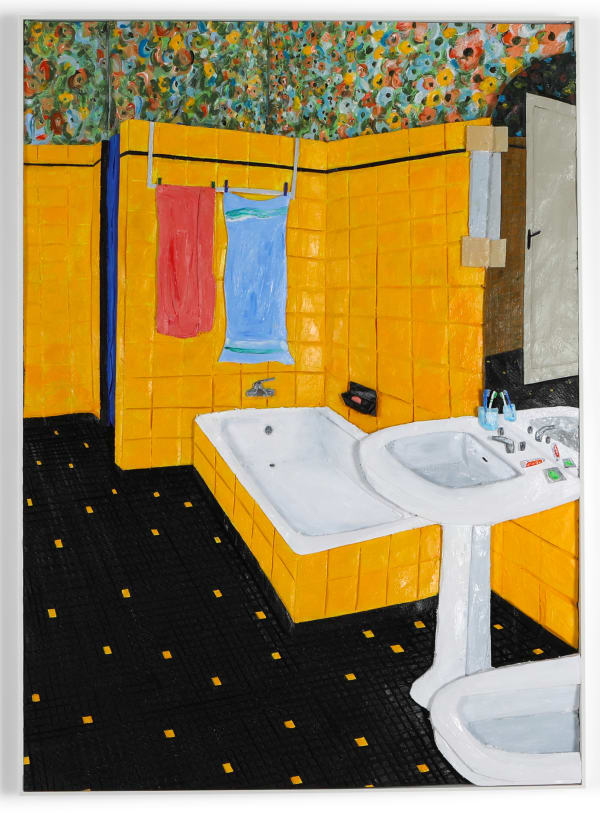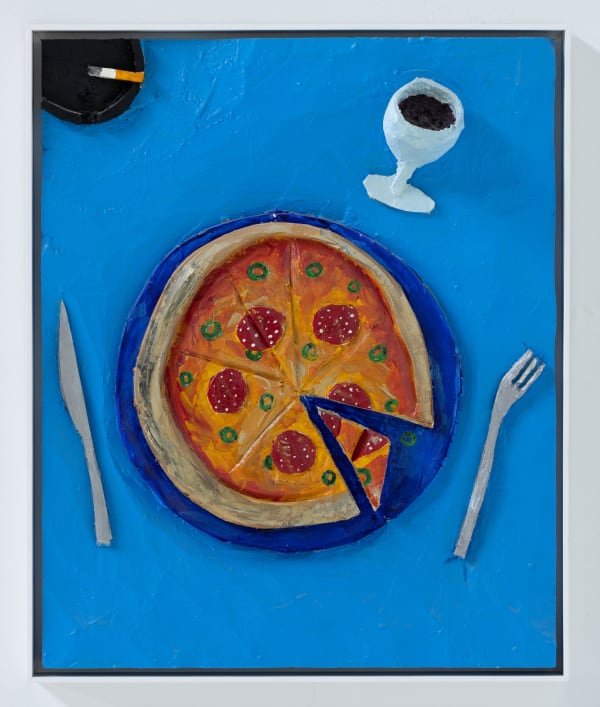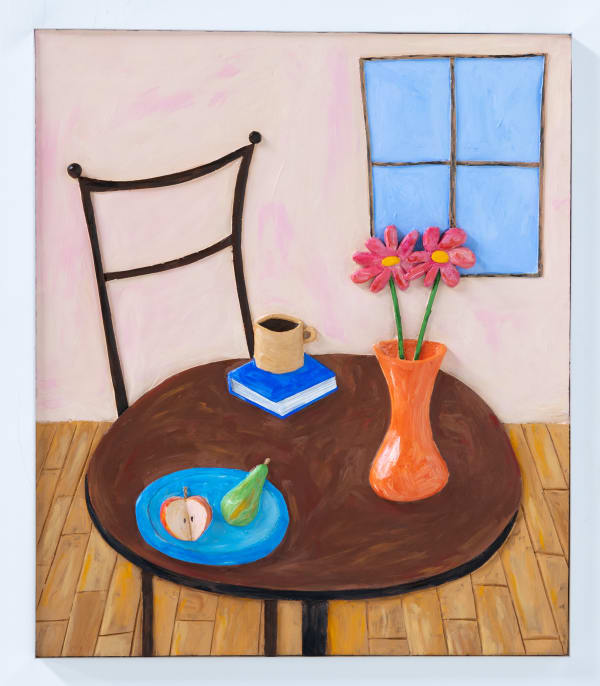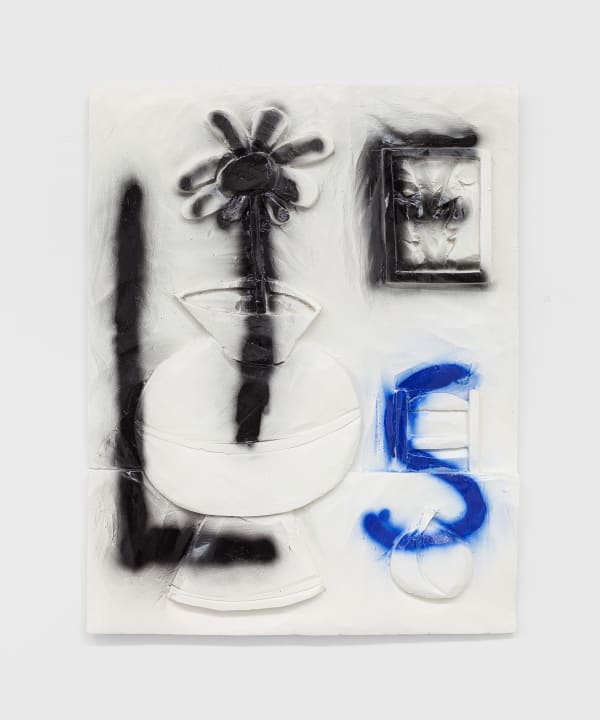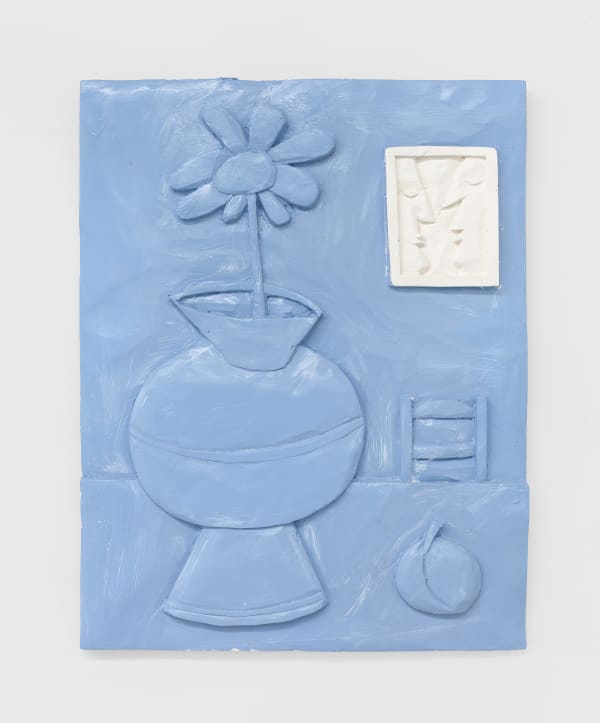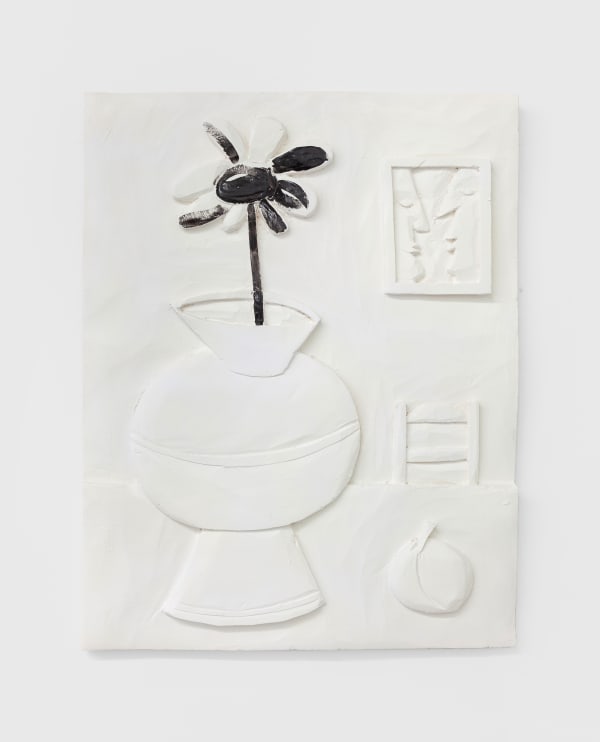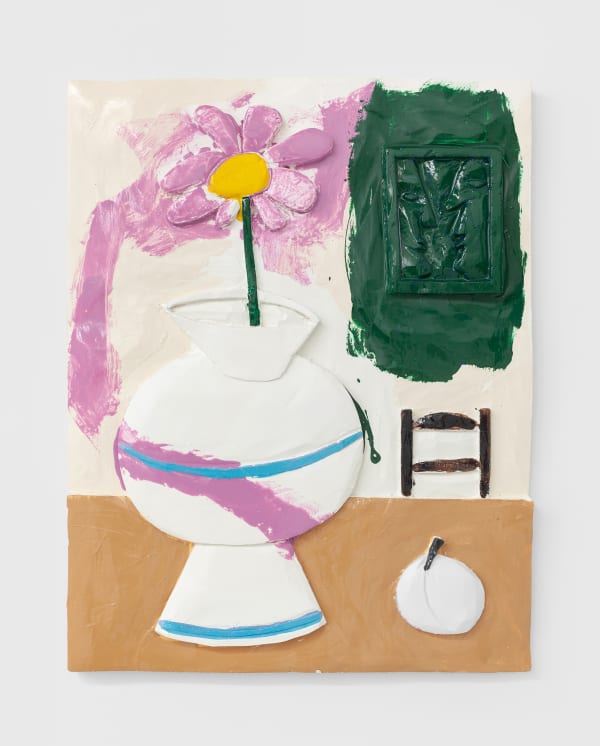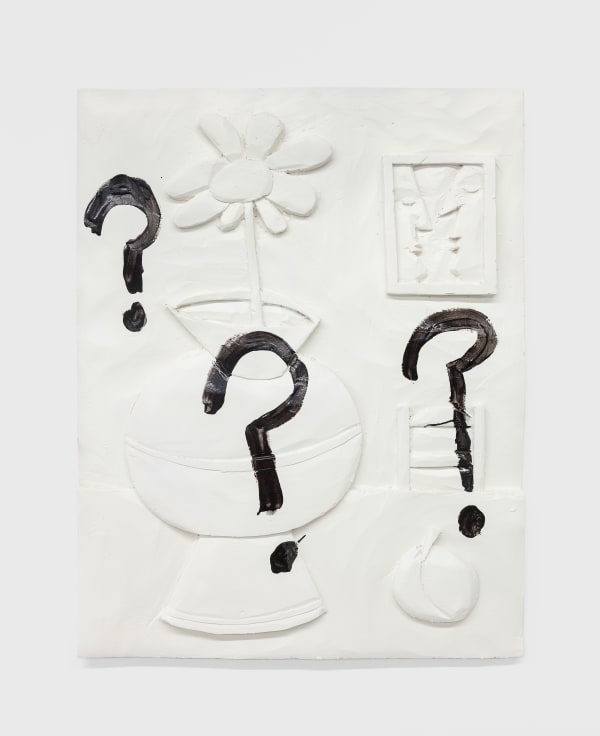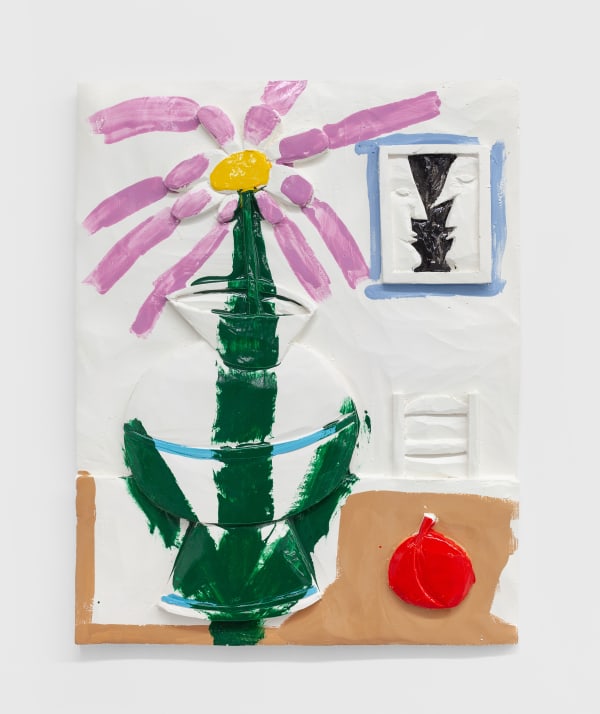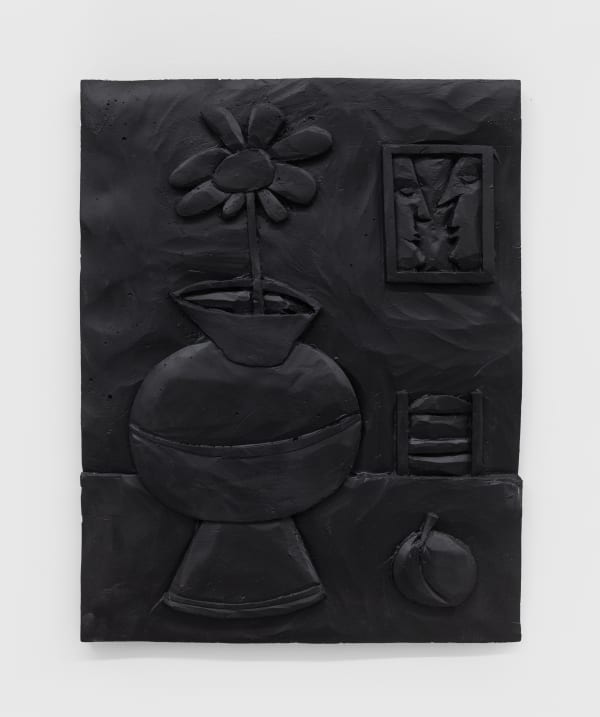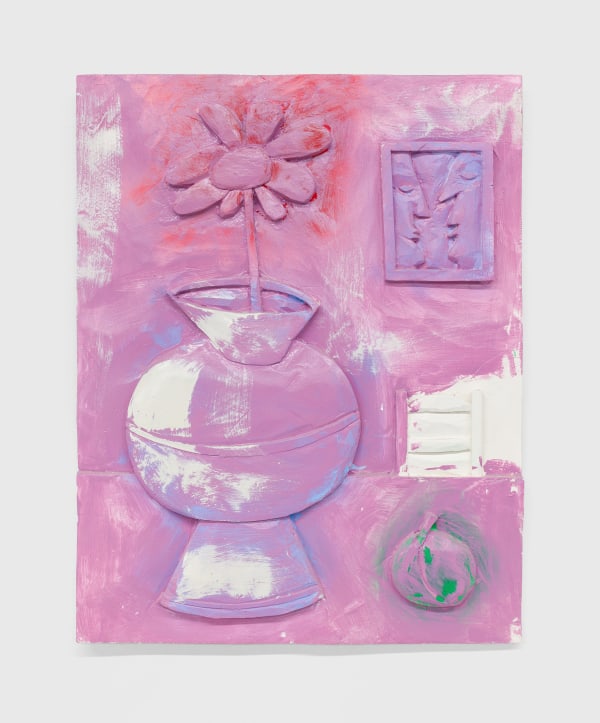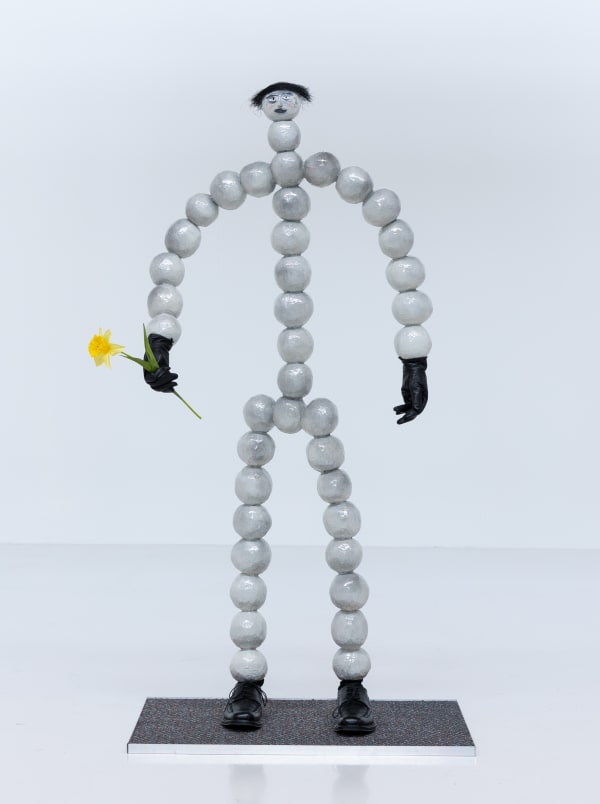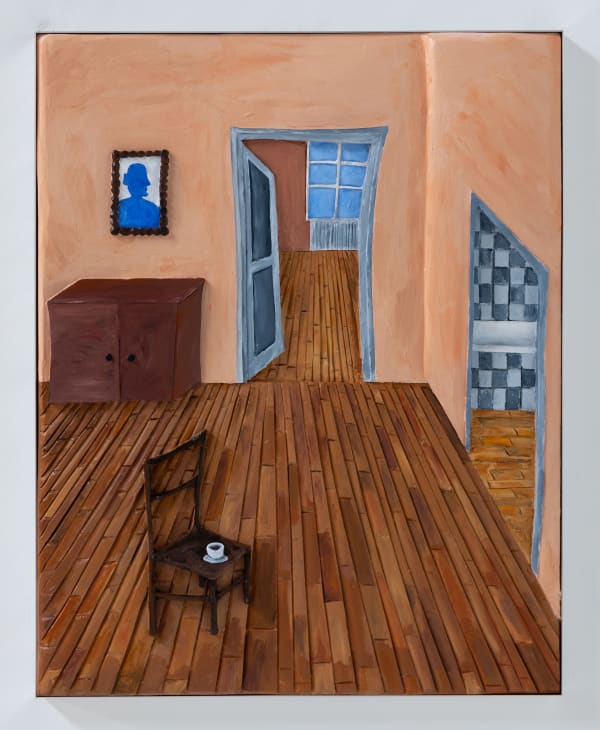Beliefs, Apples and Machines: Solo Exhibition by Victor Delestre
For Delestre's world is unlike ours. His work gives the viewer a view of an alternative universe in which nature, man and technology maintain a very different relationship with each other. His work thus invites careful reflection on the history of art and on the way in which we want to shape our future in a world in which the relationship between nature and technology is becoming increasingly complex.
Victor Delestre (b. 1989) studied at the École Supérieure des Beaux-Arts de Bordeaux (France) and at the Sandberg Institute of the Rietveld Academy in Amsterdam (Netherlands). Together with Amaury Daurel, he formed the artist duo Deborah Bowmann in 2014, whose playful experimental work has been exhibited at Centre Pompidou (Paris), among others. In his solo work, Delestre develops a more personal and intimate side of his artistic work; here, his artistic reflection on nature, people and technology often starts from everyday experiences and observations.
In Beliefs, Apples and Machines, his first solo exhibition for Everyday Gallery, Delestre presents works from three different series on which he has been working since 2016. The first series, titled Life Still, consists of a series of bas-reliefs. Since 2016, Delestre has been charting his personal life at regular intervals. He does this with a tool that almost everyone has access to: the digital camera of his telephone. Delestre is particularly interested in the apparently banal, but in fact intimate moments that are unexpectedly hidden in everyday life. He treats these images as clichés in the original sense of the word: a photographic negative that still needs to be developed further. There is usually little to see in the bas-reliefs that follow: the rooms in works such as Old Domestic View and All These Things We Don't Say are deserted, nothing seems to be happening. That is a conscious choice. The atmosphere that is thus evoked is alienating, perhaps even enchanting. Just like a cliché, in these works there is a lot of room for the viewer to give meaning to what is seen.
The mental space that Delestre focuses on in his work is somewhere between realistic and imaginary. We also see this in the second series from which the artist presents work. In total, the Hymn series consists of 50 plaster works inspired by the animation film The King and the Mockingbird (1980) by Paul Grimault and Jacques Prévert. There is a moment in the film when the bird and the chimney sweep run off with the portrait of the king and give it their own interpretation. It raises questions about creativity, freedom of expression and the joyful destruction of hierarchies. In these works Delestre humorously sketches a world in which power relations have been reversed, in which robots merrily play a flute and neat gentlemen suddenly emerge from the undergrowth.
Finally, Delestre presents us Ball Man, an anthropomorphic sculpture made of plastic and epoxy resin. The work can be seen as a metaphor for the new human being: not just any robot or an entrepreneur, not just any human or a machine, but a little bit of all those things and none of them for real. Now one thing, then another. The sculpture of Ball Man is somewhat concealed and unobtrusive, as if he doesn't want to draw attention to himself, as if he is just one of us, a visitor who can leave at any time. Maybe he is, maybe he travels with us, under our skin, this metaphor for the new human being that we are ourselves?
Text by Bram Ieven


